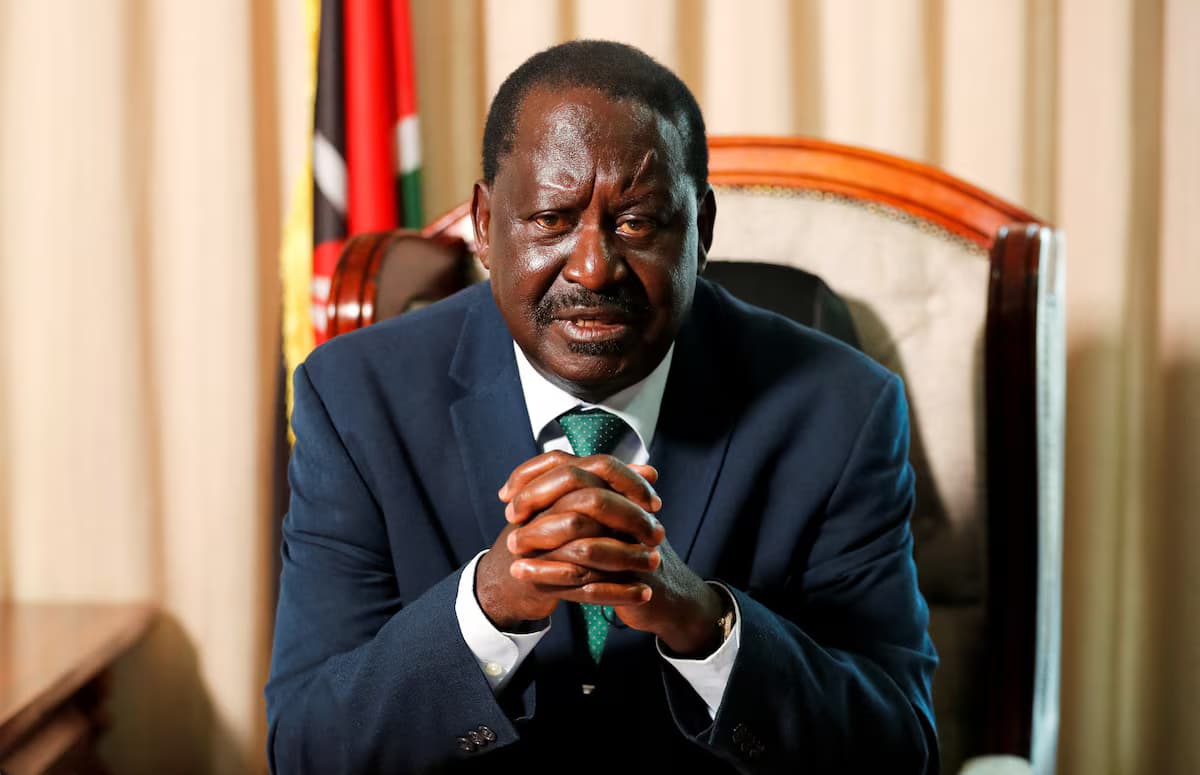We're loading the full news article for you. This includes the article content, images, author information, and related articles.
As ODM navigates a post-Raila Odinga era, senior party officials led by Chairperson Gladys Wanga have urged restraint from ambitious younger members, emphasizing unity under interim leader Dr. Oburu Oginga to prevent internal fractures ahead of the 2027 general election.

Senior leaders in the Orange Democratic Movement (ODM) have issued a stern warning to younger, ambitious politicians within the party to temper their succession campaigns following the death of long-serving leader Raila Odinga on Wednesday, October 15, 2025. The cautionary messages, delivered by party veterans, underscore a deepening rift over the party's future and the control of its political direction as it confronts a leadership vacuum for the first time in its 20-year history.
Speaking at a gathering of party delegates at the late Odinga's Opoda Farm in Bondo on Friday, October 24, 2025, ODM Chairperson and Homa Bay Governor Gladys Wanga stated that the party and the Luo community's leadership have no vacuum to be filled. She stressed the need for unity during the transition, warning that premature jostling for the role of community kingpin could shatter the political cohesion meticulously built over decades. "The leadership of Luo Nyanza has no vacuum because once Dr. Oburu has taken over the mantle of the party leadership, he is the same person who will guide the Luo community going forward," Wanga affirmed, calling for solidarity.
Her sentiments were echoed by other senior party figures who cautioned against personal ambition undermining the party's stability. Ruaraka Member of Parliament T.J. Kajwang’ issued a pointed warning, widely interpreted as being directed at outspoken younger members like Embakasi East MP Babu Owino, against attempts to position themselves as successors for personal gain. Migori County MP Fatuma Mohamed also urged youthful legislators to show respect and rally behind Dr. Oburu Oginga, who was appointed acting party leader by the National Executive Council (NEC) shortly after his brother's passing.
The calls for a slow and managed succession process come amid a fundamental disagreement within ODM's top brass on its strategic direction. Two distinct factions have emerged, offering conflicting interpretations of Raila Odinga's final wishes. One camp, which includes Chairperson Wanga, National Assembly Minority Leader Junet Mohamed, and Treasury Cabinet Secretary John Mbadi, insists that Odinga's desire was for ODM to remain within the broad-based government established with President William Ruto. Governor Wanga has publicly stated that Odinga's "last standing instruction" was for the party to work with the President.
Conversely, a second faction, led by Secretary-General Edwin Sifuna, Siaya Governor James Orengo, and deputy party leaders Godfrey Osotsi and Simba Arati, advocates for the party to chart an independent course and field its own presidential candidate in the 2027 elections. Sifuna has maintained that Odinga's final directive was for the party to focus on preparing for the next electoral contest, warning against narratives that would tie ODM to the ruling coalition. This ideological split represents the most significant internal challenge to the party's unity, with potential ramifications for the national political landscape.
The appointment of Dr. Oburu Oginga, a veteran politician and Raila's elder brother, as interim leader is seen as a move to ensure stability and continuity. However, Dr. Oginga himself has downplayed the intensity of the succession battle, suggesting a new leader will emerge organically. "Leaders emerge just like mushrooms grow. You just wake up one morning and find them grown," he stated at a delegates meeting on October 24, 2025, noting that his late brother was never formally elected as the Luo community's leader but rose through his political vision.
This leadership transition is critical not only for the party but also for the broader opposition in Kenya. For two decades, Raila Odinga's charismatic leadership centralized power, making him synonymous with the ODM brand. His absence now forces the party to test its institutional stability against the personal charisma that has long defined it. The current situation draws parallels to the succession struggles within FORD-Kenya following the death of Jaramogi Oginga Odinga in 1994, which ultimately led to a party split—a historical precedent that ODM's current leadership is keen to avoid.
For Kenya, the internal dynamics of its largest opposition party hold significant weight. President William Ruto has publicly pledged to support a strong ODM, recognizing that a vibrant opposition is essential for democratic stability and governance. How ODM navigates this delicate period of mourning, transition, and internal debate will shape its ability to function as a formidable political force and will undoubtedly influence the alliances and political calculus leading into the 2027 general election.
Keep the conversation in one place—threads here stay linked to the story and in the forums.
Other hot threads
E-sports and Gaming Community in Kenya
Active 6 months ago
Popular Recreational Activities Across Counties
Active 6 months ago
The Role of Technology in Modern Agriculture (AgriTech)
Active 6 months ago
Investing in Youth Sports Development Programs
Active 6 months ago